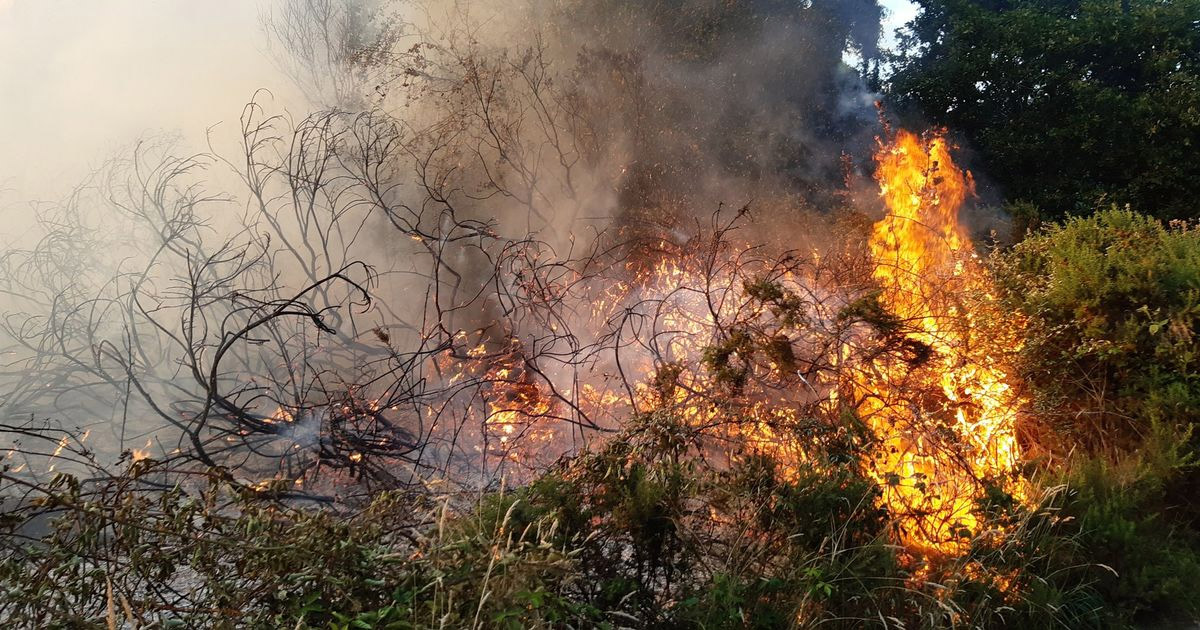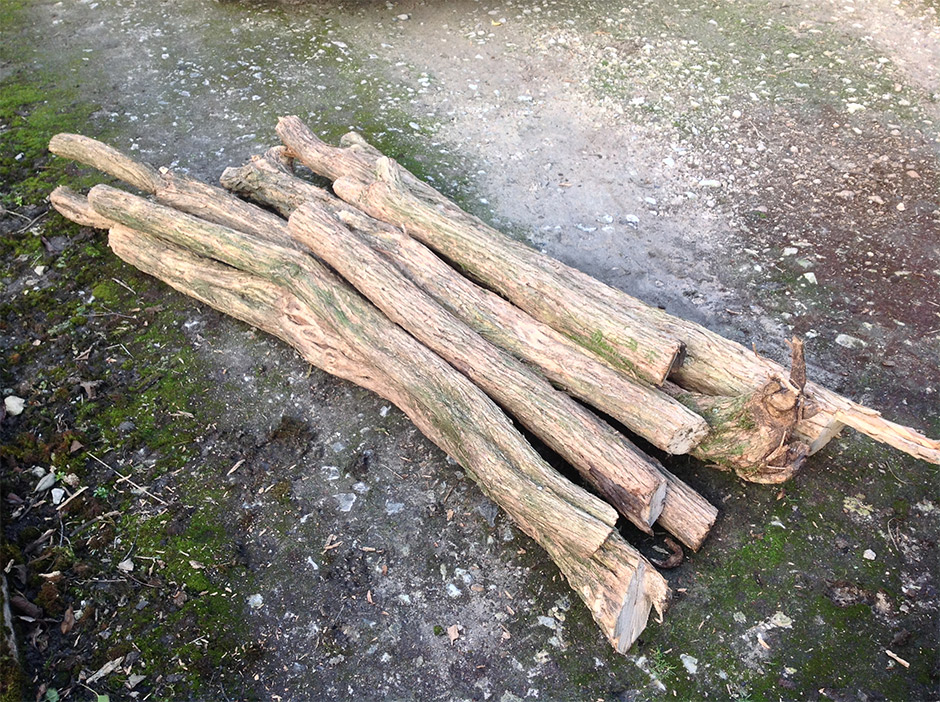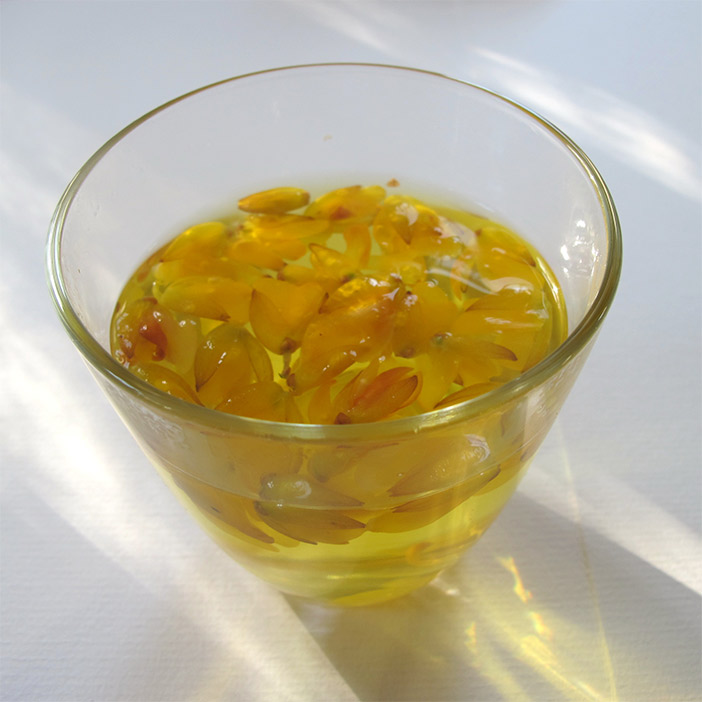
B L N F S H D T C M G P R A O U E I


còmhdachd bhràighean
an gorm is buidhe,
feachd a feitheamh
àithne ghrad nan ràithe,
freice 'n t-suirighe,
an còta màille dealgach
teine òrach
a taomadh meala,
bheir thu deàrrsadh
spreadhach gréine dhuinn,
is priobadh earraich bhuat
air cnuic bog a gheamhraidh
léine'n t-saoghail,
brat lasrach samhraidh,
gunna 'n abachaidh,
feachd mór na ràithe,
craobhsgaoileadh shuaichneis,
cnò meala air iteal
slopes' coverlet
in greens and yellows,
an army awaiting
the seasons' prompt order,
courtship's guardians
in their thorn coats of armour
a golden fire
spilling honey,
you'll bring us
sun's explosive radiance
and spring's first flicker,
on the moist hills of winter
a world's drill shirt,
summer's flame banner,
gunfire of ripeness,
season's regiments
broadcasting signals,
honey nut on the air
Similar to pine, gorse has evergreen spines that are essentially modified
leaves. Tough, sharp and prickly, they keep water loss to a minimum,
enabling the bush to tolerate exposure from wind or salt and flourish on poor soils.
These spines are also a protection from grazing herbivores, whilst providing shelter for small animals,
birds and insects.
With golden flowers that can be seen throughout the year, followed by large brownish-grey, furry seed pods which, when ripe and sun is hot, explode with an audible pop and scatter their seed several metres away.
Gorse flowers are edible, with a coconut/vanilla scent and almond taste. Similarly to the pods, press gently on the lower petals of the flower with a finger, to mimic a bumble bee landing, and the flower will spring open, permanently.
Bees love gorse, which forms a good source of food on warm winter days and early spring. In coldest winter each twig and spine can be rimed in dense, white frost.
As Thomas Hardy wrote in 'Wessex Scenes' "On the uplands the gorse is rime-laden and beautiful, with the fretted webs of spiders, like the framework of rose-windows in the shining walls of some fairy palace."

Conasg (Gaelic for gorse) means prickly or armed and indeed, when destroyed, gorse is quick to sprout new shoots and grow again, giving it strong association with resilience . Perhaps this is why it is the remedy for people who have given up belief and hope and think themselves incurable, with nothing that can be done
Dr Bach classified gorse as a remedy for uncertainty, or someone needing to be persuaded to see things in a different light for whom there is usually a way forward. A decoction of gorse flowers counters jaundice.


Its rough branches make excellent fuel for a bonfire, reaching very high temperatures quickly as it highly saturated with natural oils, and its wood was therefore used in bread ovens, comparable even to charcoal.
Gorse flowers, or a mixture of shoot tips and flowers, can be made into a tea and drunk hot or cold as a diuretic. The flowers are also edible, either on their own or as part of a salad and are fermented for wine and beer. A yellow or green dye, for clothes or food is also used
Gorse fixes nitrogen due to symbiosis with a bacterium in its roots and, if grown for seven years, makes the ground excellent for corn. Its branches were used for creel-making and in 1778 a gorse crushing mill was set up in Perth to feed horses (an acre of crushed gorse bushes kept six horses in fodder for four months).


Folk names: furze, fyrs, fursbush, thorny broom, prickly broom, whin, goss,
gorst, ruffet, frey. Also eithin (Welsh) and Enya, derived from the name Eithne, which comes from
'eithne' (kernel) or 'aitten' (gorse) and a popular name in early Ireland.
"When gorse is in flower, kissing's in season". Like the "Yellow on the Broom" the gold of gorse flowers
is a signal to travelling, whilst bringing gorse into the house in May ‘brings in the summer’
symbolising joy
Yellow Gorse – the Fire of Beltane – is also a symbol of the sun god Lugh, since it carries a spark of sun all year and for the intense fire it creates when burnt. In Irish custom, a twig was hung indoors or worn on clothing, to help overcome any adversity. Associated with Lugh (the god of sun and summer) due to its bright, yellow flowers, and endless growth in search of light, and the fact that it flowers year round, meant it has been celebrated throughout the Celtic nations. Lugnasdagh (Festival of Lugh) and 'La Fête des Fleurs d’Ajonc' (the festival of the Gorse Flowers) in Brittany both contain gorse.

The Welsh bard Taliesin described gorse as being badly behaved 'until he is subdued', a reference to the routine practice of burning the thorny bushes around the time of the Spring Equinox (which defines this letter), so that its tender new growth could be grazed by sheep. It also protects against witches.
